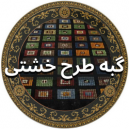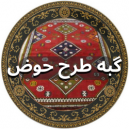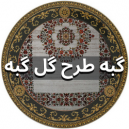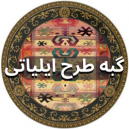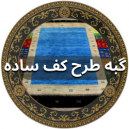Reviews
No data found
Gabbeh, also known as "Qalicheh Khersak," is a type of rug. This rug is typically woven in small sizes by the Lur and Qashqai tribes and has managed to attract many fans worldwide.
Gabbeh has long piles, requiring more wefts in its weaving, which significantly affects its softness. The number of wefts in some Gabbehs varies from three to eight per row, and the height of the piles sometimes reaches up to one centimeter. The average weight of Gabbeh per square meter is 3 kilograms.
The history of the emergence and production of Gabbeh dates back to primitive humans, as they initially used various animal skins as their underlay and over time, with experience, managed to produce the first warp and weft underlays from domestic animal wool, one of which is Gabbeh.
The meaning of the word "Gabbeh" has changed over time; currently, it means thick and fluffy. Due to its long piles and the greater number of wefts used in its weaving (usually between 3 to 8 wefts), this term is interpreted as ugly and ordinary, and sometimes other words like "Ghaireh" are also attributed to it, which encompasses the meaning of protective. However, it is said that this word originally meant raw, natural, or untouched. Also, the term "Khersak" is often used for this type of rug.
Gabbeh is of the same type as carpets, but it is produced in smaller sizes with longer piles. It is mainly woven by the handicrafts of various tribes in regions such as Bushehr, Shiraz, Khorasan, etc., and is considered as part of the main capital of these people. It is important to know that Fars Province, with a 150-year history of Gabbeh weaving, can be one of the pioneers of this art in Iran. This region includes tribes such as Qashqai, Khamsa, Mamasani, and Bakhtiari, and it can be boldly stated that the Gabbehs woven by Qashqai Turks in Fars are among the best, so much so that they have special credibility even outside the country. Other important centers for Gabbeh weaving include Do Gonbadan, Basht, Taleqan, Cheshme Bolaghi, Deh Sheikh, Charam, and Deh Kahaneye Aliya, in Kohgiluyeh County, Borazjan, and rural areas of Deh Kohneh in Bushehr Province.
The main differences between Gabbeh and carpet can be found in factors such as size, pile height, which sometimes reaches up to one centimeter, and the greater number of wefts used in it, which itself is a factor for the softness of Gabbehs. One of the factors that has led to the diversity of patterns and designs of Gabbehs is the traditional and creative pattern-making of its weavers. Because there is no pattern or template in the weaving of this type of underlay, and each weaver realizes what is in their mind, it can be confidently said that even if millions of Gabbehs are placed together, it is still possible that two Gabbehs with completely identical specifications may not be found. This point is also one of the valuable artistic features of this product. This type of rug is mainly woven in Persian style and is woven on carpet looms; however, in some areas, it may also be woven in Turkish style. Despite the very wide variety of patterns and colors of Gabbehs, it can be said that most of the Gabbehs produced in different regions of Iran have bright colors such as white, cream, or milk. Gabbeh weaving is usually done using naturally dyed wool mixed with goat hair. These wools are washed and combed after washing and then used for weaving.
This pattern carries a symbol that holds a special place in Islamic and Iranian culture. It symbolizes greatness, majesty, and glory and is also used in religion to denote dignity and courage. The lion pattern, as one of the important and common patterns in various weavings, is employed by weavers from different regions, including tribes.
To see Gabbeh rugs with lion designs in the online rug market, you can click (here).
This type of Gabbeh pattern is a combination of various types of frames and geometric shapes, each of which has its beauty and attractiveness. Among the geometric patterns used in this design are triangles, geometric shapes, star patterns, birds, and flowers. The brick pattern is one of the most popular Gabbeh patterns, especially used in Fars and Bakhtiari regions.
To see Gabbeh rugs with frames and geometric shapes designs in the online rug market, you can click (here).
In this design, a pool or basin is placed in the central center and has branches such as petals and buds around it.
To see Gabbeh rugs with pool Gabbeh designs in the online rug market, you can click (here).
This pattern includes various patterns such as Qashqai, Bakhtiari Tafresh, Haibatloo, Kurdish, and Luri, which are designed based on the culture and mentality of the tribal people. These patterns include flowers, trees, and plants and are placed in various rectangular, square, diamond, circular, and oval patterns.
To see Gabbeh rugs with tribal designs in the online rug market, you can click (here).
This type of pattern represents an important aspect of the life and culture of nomads. Trees have always had a special place in Iranian culture, especially the weeping willow, which symbolizes melancholy and sadness, and the cypress, which symbolizes freshness and joy.
To see Gabbeh rugs with tree designs in the online rug market, you can click (here).
This pattern includes designs such as Khatai, Shiraz Khattam, Jowshan, Moharraman, Star, and Qabbeh.
To see Gabbeh rugs with floral Gabbeh (geometric) designs in the online rug market, you can click (here).
This pattern consists of vertical and horizontal stripes that have their special beauty and attractiveness.
To see Gabbeh rugs with striped designs in the online rug market, you can click (here).
These patterns convey spiritual and mystical meanings and virtually represent the stages of human life from beginning to end, especially reaching the essence and existence.
To see Gabbeh rugs with interlocking designs in the online rug market, you can click (here).
These simple patterns depict simple rural houses and their barren land.
To see Gabbeh rugs with simple floor patterns in the online rug market, you can click (here).
میلیون – میلیون
No items found matching the search criteria
No items found matching the search criteria
No items found matching the search criteria
No items found matching the search criteria
No items found matching the search criteria
No items found matching the search criteria
No items found matching the search criteria
No items found matching the search criteria
شرکت ما با بیش از 65 سال سابفه در زمینه خرید و فروش و صادرات فرش دستباف از 5 سال قبل فعالیت خود را بر روی بازار های انلاین متمرکز نمود و در همین راستا بازار دفه زن شکل گرفته است.
هدف این بازار ایجاد ارتباط مستقیم بین تولید کنندگان و فروشندگان فرش دستباف ایرانی از یک سو و خریداران داخل ایران و خریداران خارج از ایران و فروشگاه های فرش دستباف در خارج از ایران از سوی دیگر می باشد

